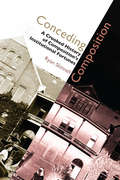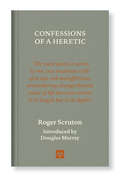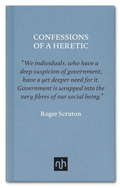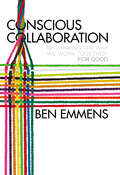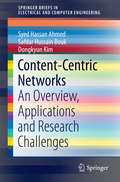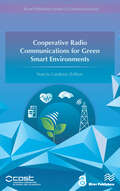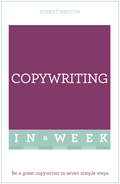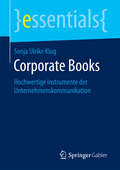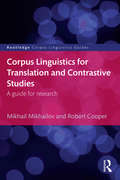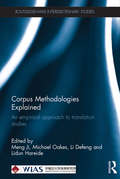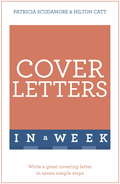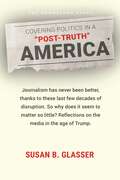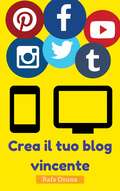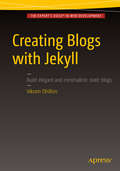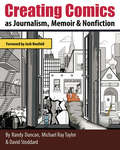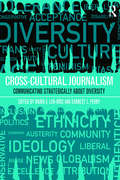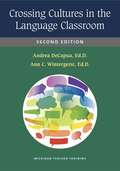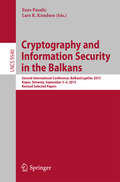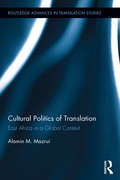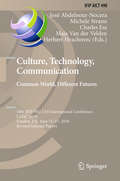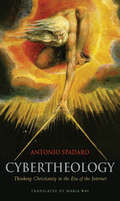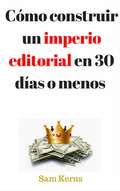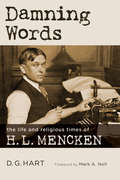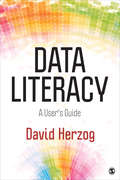- Table View
- List View
Conceding Composition: A Crooked History of Composition's Institutional Fortunes
by Ryan SkinnellFirst-year composition became the most common course in American higher education not because it could “fix” underprepared student writers, but because it has historically served significant institutional interests. That is, it can be “conceded” in multiple ways to help institutions solve political, promotional, and financial problems. Conceding Composition is a wide-ranging historical examination of composition’s evolving institutional value in American higher education over the course of nearly a century. Based on extensive archival research conducted at six American universities and using the specific cases of institutional mission, regional accreditation, and federal funding, this study demonstrates that administrators and faculty have introduced, reformed, maintained, threatened, or eliminated composition as part of negotiations related to nondisciplinary institutional exigencies. Viewing composition from this perspective, author Ryan Skinnell raises new questions about why composition exists in the university, how it exists, and how teachers and scholars might productively reconceive first-year composition in light of its institutional functions. The book considers the rhetorical, political, organizational, institutional, and promotional options conceding composition opened up for institutions of higher education and considers what the first-year course and the discipline might look like with composition’s transience reimagined not as a barrier but as a consummate institutional value.
Confessions of a Heretic, Revised Edition: Selected Essays
by Roger ScrutonA revised edition of the Notting Hill Editions essay collection by the late Sir Roger Scruton with a new introduction by Douglas Murray.Confessions of a Heretic is a collection of provocative essays by the influential social commentator and polemicist Roger Scruton. Each &“confession&” reveals aspects of the author&’s thinking that his critics would probably have advised him to keep to himself. In this selection, covering subjects from art and architecture to politics and nature conservation, Scruton challenges popular opinion on key aspects of our culture: What can we do to protect Western values against Islamist extremism? How can we nurture real friendship through social media? Why is the nation-state worth preserving? How should we achieve a timely death against the advances of modern medicine? This provocative collection seeks to answer the most pressing problems of our age.In his introduction, the bestselling author and commentator Douglas Murray writes of what it cost Scruton to express views considered unpalatable, and of the importance of these ideas after Scruton&’s death.
Confessions of a Heretic: Selected Essays
by Roger ScrutonHard-hitting essays by acclaimed social commentator and philosopher Roger Scruton, guaranteed to provoke lively debateA wide-ranging selection that includes essays on architecture and modern art, the environment, politics, and culture.Each “confession” reveals aspects of the author’s thinking that his critics would probably have advised him to keep to himself. Roger Scruton challenges popular opinion on key aspects of our society: What can we do to protect Western values against Islamic extremism? How can we nurture real friendship in the digital age of social media and Facebook? How should we achieve a timely death against the advances of modern medicine? How should environmental policies be shaped by the government? This provocative collection seeks to answer the most pressing problems of our age.
Conscious Collaboration: Re-Thinking The Way We Work Together, For Good
by Ben EmmensWhen collaboration works, the results can be breath-taking! But it doesn't always deliver on its potential. Collaboration has been defined as "an unnatural act practiced by non-consenting adults". And often that's exactly what it is! Some collaboration can be painfully difficult with the result that problems are either ignored or smoothed over until the collaboration falters or disintegrates, or self-interest and personal agendas take over and conflict quickly arises. Collaboration and partnerships work well in the aid sector because they have to - no one body has the resources to solve massive problems on their own. Business often sees the advantages of collaboratively sharing costs without fully recognizing the shift in mindset that is required to take managers with a "winner takes all" worldview and get them performing effectively in a win-win world. Part of the solution lies in bringing consciousness to the workplace and developing it as a core competence. A conscious approach to business relationships, planning, and delivery can enable individuals and organizations to truly think about what they are doing, make changes where needed, and become more effective. It is a particularly effective way of managing the multiple and occasionally conflicting stakeholder objectives inherent in any collaborative project. The author draws on his experience in the aid sector and with non-profit organizations to describe the building blocks that underpin successful collaboration, and inspires us to re-think the way we work together, for good.
Content-Centric Networks: An Overview, Applications and Research Challenges (SpringerBriefs in Electrical and Computer Engineering #0)
by Syed Hassan Ahmed Safdar Hussain Bouk Dongkyun KimThis book introduces Content-Centric Networking (CCN), a networking paradigm that provides a simple and effective solution to the challenging demands of future wired and wireless communications. It provides an overview of the recent developments in the area of future internet technologies, bringing together the advancements that have been made in Information-Centric Networking (ICN) in general, with a focus on CCN. It begins with an introduction to the basics of CCN is followed by an overview of the current internet paradigm and its challenges. Next, an application perspective has been included, where the authors encompass the selected applications for CCN with recent refereed research and developments. These applications include Internet of Things (IoT), Smart Grid, Vehicular Ad hoc Networks (VANETs), and Wireless Sensor Networks (WSNs). The book is a useful reference source for practising researchers, and can be used as supporting material for undergraduate and graduate level courses in computer science and electrical engineering.
Cooperative Radio Communications for Green Smart Environments
by Narcis CardonaThe demand for mobile connectivity is continuously increasing, and by 2020 Mobile and Wireless Communications will serve not only very dense populations of mobile phones and nomadic computers, but also the expected multiplicity of devices and sensors located in machines, vehicles, health systems and city infrastructures. Future Mobile Networks are then faced with many new scenarios and use cases, which will load the networks with different data traffic patterns, in new or shared spectrum bands, creating new specific requirements. This book addresses both the techniques to model, analyse and optimise the radio links and transmission systems in such scenarios, together with the most advanced radio access, resource management and mobile networking technologies. This text summarises the work performed by more than 500 researchers from more than 120 institutions in Europe, America and Asia, from both academia and industries, within the framework of the COST IC1004 Action on "Cooperative Radio Communications for Green and Smart Environments". The book will have appeal to graduates and researchers in the Radio Communications area, and also to engineers working in the Wireless industry. Topics discussed in this book include: • Radio waves propagation phenomena in diverse urban, indoor, vehicular and body environments• Measurements, characterization, and modelling of radio channels beyond 4G networks• Key issues in Vehicle (V2X) communication• Wireless Body Area Networks, including specific Radio Channel Models for WBANs• Energy efficiency and resource management enhancements in Radio Access Networks• Definitions and models for the virtualised and cloud RAN architectures• Advances on feasible indoor localization and tracking techniques• Recent findings and innovations in antenna systems for communications• Physical Layer Network Coding for next generation wireless systems• Methods and techniques for MIMO Over the Air (OTA) testing
Copywriting In A Week: Be A Great Copywriter In Seven Simple Steps
by Robert Ashton Rob AshtonGreat copywriting just got easierIt's strange to think that there was a time when only the privileged few could read or write. The rest of us relied on the spoken word. Storytelling was used to pass knowledge on from one generation to the next. Now, most of us are literate and use the written word to gather information and inform our decision making. Increasingly we do this online, with social media and messaging enabling rapid, spontaneous global communication. But rather than freeing us from the need for clear, effective written communication, it actually makes good communication even more important. The less we communicate face to face, the greater the opportunity for misunderstandings. Of course, all writing communicates your message to people you cannot see and may never meet. It means you can influence more widely; it also means you must take care not to make assumptions aboutyour reader, especially those who see your public postings. Successful copywriting is constructed from carefully selected words, each with a clear purpose. It is written to prompt feelings, thoughts or actions. It is clear, concise and at times comforting. It is also comprehensible, even to those not yet confident users of your language. Reading this book, and following the techniques it introduces, will make you a more effective writer. Expertise in grammar is not needed as all the necessary jargon is simply defined and, anyway, some forms of business writing deliberately ignorerules. This book is for people who want to write for results. Each of the seven chapters in Copywriting In A Week covers a different aspect:- Sunday: Focusing your message- Monday: Using layout, pictures and colour to make words memorable- Tuesday: Writing effective letters- Wednesday: Making advertising work for you- Thursday: Communicating clearly with the media- Friday: Preparing promotional print- Saturday: Composing proposals and presentation visuals
Corporate Books: Hochwertige Instrumente der Unternehmenskommunikation (essentials)
by Sonja Ulrike KlugDieser Leitfaden führt durch alle Entwicklungsstadien von Unternehmensbüchern und zeigt, worauf es ankommt. Die Autorin erläutert das spezielle Vorgehen bei der Planung, Realisierung und Vermarktung von Corporate Books als Premium-Instrumenten der Unternehmenskommunikation, damit ihre Vorteile ausgeschöpft werden können. Unternehmensbücher erhöhen den Bekanntheitsgrad, stärken die Markenidentität, dienen als Zugpferd für Kampagnen und unterstreichen den Expertenstatus für ein Thema. Sie können von Konzernen, Mittelständlern, Kleinunternehmern und Solopreneuren gleichermaßen eingesetzt werden. Corporate Books wirken langfristig und beeinflussen die Wahrnehmung eines Unternehmens durch die Öffentlichkeit positiv.
Corpus Linguistics for Translation and Contrastive Studies: A guide for research (Routledge Corpus Linguistics Guides)
by Robert Cooper Mikhail MikhailovCorpus Linguistics for Translation and Contrastive Studies provides a clear and practical introduction to using corpora in these fields. Giving special attention to parallel corpora, which are collections of texts in two or more languages, and demonstrating the potential benefits for multilingual corpus linguistics research to both translators and researchers, this book: explores the different types of parallel corpora available, and shows how to use basic and advanced search procedures to analyse them; explains how to compile a parallel corpus, and discusses their uses for translation purposes and to research linguistic phenomena across languages; demonstrates the use of corpus extracts across a wide range of texts, including dictionaries, novels by authors including Jane Austen and Mikhail Bulgakov, and newspapers such as The Sunday Times; is illustrated with case studies from a range of languages including Finnish, Russian, English and French. Written by two experienced researchers and practitioners, Corpus Linguistics for Translation and Contrastive Studies is essential reading for postgraduate students and researchers working within the area of translation and contrastive studies.
Corpus Methodologies Explained: An empirical approach to translation studies (Routledge-WIAS Interdisciplinary Studies)
by Michael Oakes Meng Ji Li Defeng Lidun HareideThis book introduces the latest advances in Corpus-Based Translation Studies (CBTS), a thriving subfield of Translation Studies which forms an important part of both translator training and empirical translation research. Largely empirical and exploratory, a distinctive feature of CBTS is the development and exploration of quantitative linguistic data in search of useful patterns of variation and change in translation. With the introduction of textual statistics to Translation Studies, CBTS has geared towards a new research direction that is more systematic in the identification of translation patterns; and more explanatory of any linguistic variations identified in translations. The book traces the advances from the advent of language corpora in translation studies, to the new textual dimensions and shift towards a probability-variation model. Such advances made in CBTS have enabled in-depth analyses of translation by establishing useful links between a translation and the social and cultural context in which the translation is produced, circulated and consumed.
Cover Letters In A Week: Write A Great Covering Letter In Seven Simple Steps
by Pat Scudamore Hilton CattSunday: Understand the importance of first impressions and the common mistakes people make Monday: Ensure your application is taken seriously with a cover letter that is concise, complements your CV and is targeted to the job you have applied for Tuesday: Discover how to style and structure your cover letter with advice on forms of address, etiquette, fonts, margins and the importance of 'white space' Wednesday: Design your cover letter to engage your audience and overcome the competition for advertised jobs Thursday: Design a speculative cover letter to approach the invisible job market Friday: Learn how to address cover letters to agencies and recruitment consultants Saturday: Learn from your applications, whether successful or not, and develop your writing style for the future
Covering Politics in a "Post-Truth" America
by Susan B. GlasserIn a new Brookings Essay, Politico editor Susan Glasser chronicles how political reporting has changed over the course of her career and reflects on the state of independent journalism after the 2016 election.The Bookings Essay: In the spirit of its commitment to higquality, independent research, the Brookings Institution has commissioned works on major topics of public policy by distinguished authors, including Brookings scholars. The Brookings Essay is a multi-platform product aimed to engage readers in open dialogue and debate. The views expressed, however, are solely those of the author. Available in ebook only.
Crea il tuo blog vincente
by Valeria Bragante Rafa OsunaCrea il tuo blog vincente di Rafa Osuna Letture che ti aiuteranno a creare un blog di successo. Stai pensando di cominciare a scrivere in un blog o ne hai già uno e non ti è chiaro cosa fare? In questo caso, questo libro è per te. Cosa troverai in questo libro? O meglio... che ne pensi se comincio a dirti cosa non troverai? In questo libro non troverai filosofia a buon mercato riguardo i blog. Quella che tentano di venderti le persone che non hai mai avuto successo con un blog. In questo libro non troverai un corso tecnico su come iniziare un blog. Oggi le piattaforme di creazione di blog sono così intuitive e facili da usare che non vale la pena perdere tempo leggendo un libro su questo. Se cerchi questo, ti raccomando qualcuno dei tanti tutorials che ci sono in Youtube su questo tema. Cerca in Internet. Non troverai nemmeno formule magiche per diventare milionario in due settimane con il tuo blog. Se qualcuno ti offre una cosa del genere, scappa immediatamente. Quello che troverai in questo libro è un breve riassunto di ciò che ho scritto nel mio blog personale ((El Último Blog) durante gli ultimi dieci anni. 10 anni nei quali non solo ho continuato il mio blog ma ho diretto una rete di blog con più di 50 redattori, ho partecipato a blog collaborativi, ho tenuto conferenze e corsi sui blog, ho partecipato a varie pubblicazioni. Ciò che ho voluto offrirti in questo libro, come riassunto di questi 10 anni di blogging, è una scelta dei 15 articoli che credo riflettano in modo chiaro e conciso tutto ciò di cui hai bisogno per avere successo con il tuo blog. Sono 15 articoli che ho scelto tra più dei 2000 che ho pubblicato in questi anni. Articoli che ho adattato per la pubblicazione in questo libro, in modo che, mantenendo la freschezza di un post, avessero un certo collegamento tra loro. In questo modo, spero di essere riuscito, con alcune letture veloci, tipiche dei post di
Creating Blogs with Jekyll
by Vikram DhillonLearn to create your own blog using the Jekyll static site generator. You'll start with a simple template, add new features to it, automate any maintenance, attach social sharing, and begin writing. By the end of Creating Blogs with Jekyll, you will be able to create custom blogs with Jekyll, update the content with ease, and reach out to your readers with minimal effort. Because you've built your blog yourself, you'll know exactly how each component works, and you won't be dependent on an admin panel to maintain it. Creating Blogs with Jekyll equips you with the knowledge to create an elegantly designed blog and scale it to capture more readers. Recapture the magic of writing by creating great content and use an easy workflow in Jekyll to maintain it for blogging. Do new things and write about them in style with Jekyll. Takes you through building a fully functional blog from scratch using Jekyll Provides a fun way to work on a side-project and integrate cutting edge web technologies Teaches you how to update and maintain your awesome blog Jekyll is a simple, secure and very low maintenance blog engine that converts naturally written content in markdown into a beautiful and minimal blog. It allows you to focus on content creation and expressing yourself instead of spending all your time updating the plugins and maintaining the database. Jekyll does not rely on a database as a backend so your blog will be far more secure and reliable than any traditional blogging engines such as WordPress. We live in a day and age where short attention spans make it very difficult to expose a reader to interesting content. What better way to capture a reader's attention and retain viewers by captivating them by your own unique style and taste? Jekyll allows the content to shine with minimal distractions and a greater focus on the content and easy sharing of the content. What you'll learn Choose a base theme appropriate for your style and development Integrate various web technologies that will work well together and enhance your blog Automate social sharing components and comments workflow Make adjustments to themes, views and styles of blog posts Update any of the modular components of the blog and integrate new technologies Implementing Jekyll and deploying static websites for future projects Who this book is for Creating Blogs with Jekyll is for the developer who is ready to move beyond the complexities of maintaining a content management system by creating their own unique blog in their own style. It's for the project manager tired of spending all their time editing their blog on the admin panel and updating the content management system. Creating Blogs with Jekyll is an excellent choice for new developers to start blogging because of the simplicity of Jekyll's theming layer and writing workflow. It's an excellent choice for the web developer wanting to build their blog from scratch and expand their knowledge of higher level web technologies.
Creating Comics as Journalism, Memoir and Nonfiction
by Randy Duncan Michael Ray Taylor David StoddardThis book provides student journalists, artists, designers, creative writers and web producers with the tools and techniques they need to tell nonfiction stories visually and graphically. Weaving together history, theory, and practical advice, seasoned nonfiction comics professors and scholars Randy Duncan, Michael Ray Taylor and David Stoddard present a hands-on approach to teach readers from a range of backgrounds how to develop and create a graphic nonfiction story from start to finish. The book offers guidance on: -how to find stories and make use of appropriate facts and visuals; -nonfiction narrative techniques; -artist's tools and techniques; -print, digital, and multimedia production; -legal and ethical considerations. Interviews with well-known nonfiction comics creators and editors discuss best practices and offer readers inspiration to begin creating their own work, and exercises at the end of each chapter encourage students to hone their skills.
Cross-Cultural Journalism: Communicating Strategically About Diversity
by Earnest Perry María Len-RíosBuilt on the hands-on reporting style and curriculum pioneered by the University of Missouri, this introductory textbook teaches students how to write about and communicate with people of backgrounds that may be different from their own, offering real-world examples of how to practice excellent journalism and strategic communication that take culture into account. Specifically, the book addresses how to: engage with and talk across difference; identify the ways bias can creep into our communications, and how to mitigate our tendencies toward bias; use the concept of fault lines and approach sources and audiences with humility and respect; communicate with audiences about the complexity inherent in issues of crime, immigration, sports, health inequalities, among other topics; interpret census data categories and work with census data to craft stories or create strategic campaign strategies; reconsider common cultural assumptions about race, class, gender, identity, sexual orientation, immigration status, religion, disability, and age, and recognize their evolving and constructed meaning and our role as professional communicators in shaping national discussions of these issues. In addition to its common sense, practical approach, the book's chapters are written by national experts and leading scholars on the subject. Interviews with award-winning journalists, discussion questions, suggested activities, and additional readings round out this timely and important new textbook. Supplemented by a companion website featuring additional case studies and examples of best practice, Cross-Cultural Journalism offers journalists and other communication professionals the conceptual framework and practical know-how they need to report and communicate effectively about difference.
Crossing Cultures In The Language Classroom, Second Edition
by Andrea DeCapua Ann WintergerstCrossing Cultures in the Language Classroom attempts to balance theory and practice for pre-service and in-service teachers in general education programs or in ESL/EFL, bilingual, and foreign language teacher training programs, as well as cross-cultural awareness workshops. This book is unique in that it combines theory with a wide range of experiential activities and projects designed to actively engage users in the process of understanding different aspects of cross-cultural awareness. The goals of the book are to help readers: expand cultural awareness of one’s own culture and that of others achieve a deeper understanding of what culture is and the relationship between culture and language acquire the ability to observe behaviors in order to draw conclusions based on observation rather than preconceptions understand and implement observations of cultural similarities and differences develop an attitude of tolerance toward cultural differences and move away from the “single story.” The new edition has been thoroughly updated and includes a Suggested Projects section in each chapter. This section provides opportunities for users of the text to explore in greater depth an area and topic of interest. It also includes even more Critical Incidents--brief descriptions of events that depict some element or elements of cultural differences, miscommunication, or culture clash. Critical Incidents develop users’ ability to analyze and understand how multiple perspectives of the same situation are rooted in differing culturally influenced beliefs, behaviors, norms of interaction, and worldviews.
Cryptography and Information Security in the Balkans: Second International Conference, BalkanCryptSec 2015, Koper, Slovenia, September 3-4, 2015, Revised Selected Papers (Lecture Notes in Computer Science #9540)
by Enes Pasalic Lars R. KnudsenThis book contains revised selected papers fromthe Second International Conference on Cryptology and Information Security inthe Balkans, BalkanCryptSec 2015, held in Koper, Slovenia, in September 2015. The 12 papers presented inthis volume were carefully reviewed and selected from 27 submissions. They areorganized in topical sections named: symmetric key cryptography; cryptanalysis;security and protocols; and implementation and verifiable encryption.
Cultural Politics of Translation: East Africa in a Global Context (Routledge Advances in Translation and Interpreting Studies)
by Alamin M. MazruiThis book is the first full-length examination of the cultural politics at work in the act of translation in East Africa, providing close critical analyses of a variety of texts that demonstrate the myriad connections between translation and larger socio-political forces. Looking specifically at texts translated into Swahili, the book builds on the notion that translation is not just a linguistic process, but also a complex interaction between culture, history, and politics, and charts this evolution of the translation process in East Africa from the pre-colonial to colonial to post-colonial periods. It uses textual examples, including the Bible, the Qur’an, and Frantz Fanon’s Wretched of the Earth, from five different domains – religious, political, legal, journalistic, and literary – and grounds them in their specific socio-political and historical contexts to highlight the importance of context in the translation process and to unpack the complex relationships between both global and local forces that infuse these translated texts with an identity all their own. This book provides a comprehensive portrait of the multivalent nature of the act of translation in the East African experience and serves as a key resource for students and researchers in translation studies, cultural studies, post-colonial studies, African studies, and comparative literature.
Culture, Technology, Communication. Common World, Different Futures: 10th IFIP WG 13.8 International Conference, CaTaC 2016, London, UK, June 15-17, 2016, Revised Selected Papers (IFIP Advances in Information and Communication Technology #490)
by Charles Ess José Abdelnour-Nocera Michele Strano Maja Van der Velden Herbert HrachovecThis volume constitutes the refereed post-conference proceedings of the 10th IFIP WG 13. 8 International Conference on Culture, Technology, and Communication, CaTaC 2016, held in London, UK, in June 2016. The 9 revised full papers were carefully reviewed and selected from 22 submissions. The papers explore the intersections between culture, technology, and communication, applying different theoretical and methodological perspectives, genres, and styles. They deal with cultural attitudes towards technology and communication, interaction design, and international development.
Cybertheology: Thinking Christianity in the Era of the Internet
by Antonio Spadaro S.J.Because the Internet has changed and is changing the ways in which we think and act, it must also be changing the ways in which we think Christianity and its theology. Cybertheology is the first book to explore this process from a Catholic point of view. Drawing on the theoretical work of authors such as Marshall McLuhan, Peter Levy, and Teilhard de Chardin, it questions how technologies redefine not only the ways in which we do things but also our being and therefore the way we perceive reality, the world, others, and God. “Does the digital revolution affect faith in any sense?” Spadaro asks. His answer is an emphatic Yes. But how, then, are we to live well in the age of the Internet?Spadaro delves deeply into various dimensions of the impact of the Net on the Church and its organization, on our understanding of revelation, grace, liturgy, the sacraments, and other classical theological themes. He rightly points out that the digital environment is not merely an external instrument that facilitates human communication or a purely virtual world, but part of the daily experience of many people, a new “anthropological space” that is reshaping the way we think, know, and express ourselves. Naturally, this calls for a new understanding of faith so that it makes sense to people who live and work in the digital media environment. In developing the notion of cybertheology, Spadaro seeks to propose an intelligence of faith (intellectus fidei) in the era of the Internet.The book’s chapters include reflections on man the decoder and the search engines of God, networked existence and the mystical body, hacker ethics and Christian vision, sacraments and “virtual presence,” and the theological challenges of collective intelligence.
Cómo construir un imperio editorial en 30 días o menos
by Sam Kerns Gabriela Pineda CoutiñoCómo construir un imperio editorial en 30 días o menos de Sam Kerns Para poder vivir de ser escritor, deberás desechar todo lo que sabes. ¿Quieres vivir de ser escritor? Deberás desechar todo lo que sabes Déjame adivinar, eres un escritor talentoso que está dispuesto a hacer lo necesario para vivir de escribir, has leído incontables artículos y libros sobre el tema, incluso has seguido sus consejos, pero aún no generas ganancias, o tal vez eres un escritor nuevo que está convencido de que le falta algo porque tu propia experiencia no cuadra con lo que otros dicen que se puede hacer, o tal vez haz trabajado como escritor independiente por años y estás convencido de que simplemente no es posible renunciar a tu trabajo “real” y dedicarte a lo que amas de tiempo completo. Déjame decirte un secreto: Te han mentido, sí, me oyes bien: Te han mentido. La verdad es que sólo el 10% de los escritores ganan lo suficiente para mantenerse, el 10%, eso no es algo en lo que los otros libros de cómo escribir inviertan tiempo ¿o sí? Por suerte, hay una solución real. Sé esto porque yo mismo lo he hecho por años, pero para poder tener un negocio exitoso, deberás voltear de cabeza el modelo de trabajo como escritor independiente, de hecho, prácticamente deberás tirar por la ventana todo lo que crees saber. De lo que hablo es de un sistema nuevo, uno que no limita la habilidad que tiene escritor independiente de ganar una buena cantidad por el tiempo, estoy hablando de ganarte la vida y estar orgulloso de eso. En mi nuevo libro, te mostraré cómo crear un imperio editorial en 30 días o menos, aprenderás: Por qué la mayoría de los profesionistas independientes no pueden tener una vida decente y que puedes hacer para evitarlo. Cómo estructurar tu negocio editorial de manera que sea lo mejor para tu estilo de vida. Cómo convertirte en una marca y atraer
Damning Words: The Life and Religious Times of H. L. Mencken
by D. G. HartRecounts a famously outspoken agnostic's surprising relationship with Christianity H. L. Mencken (1880–1956) was a reporter, literary critic, editor, author—and a famous American agnostic. From his role in the Scopes Trial to his advocacy of science and reason in public life, Mencken is generally regarded as one of the fiercest critics of Christianity in his day. In this biography D. G. Hart presents a provocative, iconoclastic perspective on Mencken's life. Even as Mencken vividly debunked American religious ideals, says Hart, it was Christianity that largely framed his ideas, career, and fame. Mencken's relationship to the Christian faith was at once antagonistic and symbiotic. Using plenty of Mencken's own words, Damning Words superbly portrays an influential figure in twentieth-century America and, at the same time, casts telling new light on his era.
Data Literacy: A User′s Guide
by David L. HerzogA practical, skill-based introduction to data analysis and literacy We are swimming in a world of data, and this handy guide will keep you afloat while you learn to make sense of it all. In Data Literacy: A User′s Guide, David Herzog, a journalist with a decade of experience using data analysis to transform information into captivating storytelling, introduces students and professionals to the fundamentals of data literacy, a key skill in today’s world. Assuming the reader has no advanced knowledge of data analysis or statistics, this book shows how to create insight from publicly-available data through exercises using simple Excel functions. Extensively illustrated, step-by-step instructions within a concise, yet comprehensive, reference will help readers identify, obtain, evaluate, clean, analyze and visualize data. A concluding chapter introduces more sophisticated data analysis methods and tools including database managers such as Microsoft Access and MySQL and standalone statistical programs such as SPSS, SAS and R.
Data Literacy: A User′s Guide
by David L. HerzogA practical, skill-based introduction to data analysis and literacy We are swimming in a world of data, and this handy guide will keep you afloat while you learn to make sense of it all. In Data Literacy: A User′s Guide, David Herzog, a journalist with a decade of experience using data analysis to transform information into captivating storytelling, introduces students and professionals to the fundamentals of data literacy, a key skill in today’s world. Assuming the reader has no advanced knowledge of data analysis or statistics, this book shows how to create insight from publicly-available data through exercises using simple Excel functions. Extensively illustrated, step-by-step instructions within a concise, yet comprehensive, reference will help readers identify, obtain, evaluate, clean, analyze and visualize data. A concluding chapter introduces more sophisticated data analysis methods and tools including database managers such as Microsoft Access and MySQL and standalone statistical programs such as SPSS, SAS and R.
